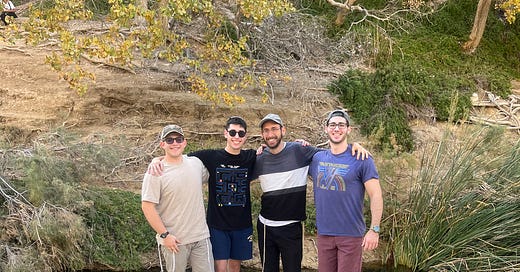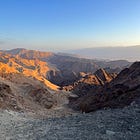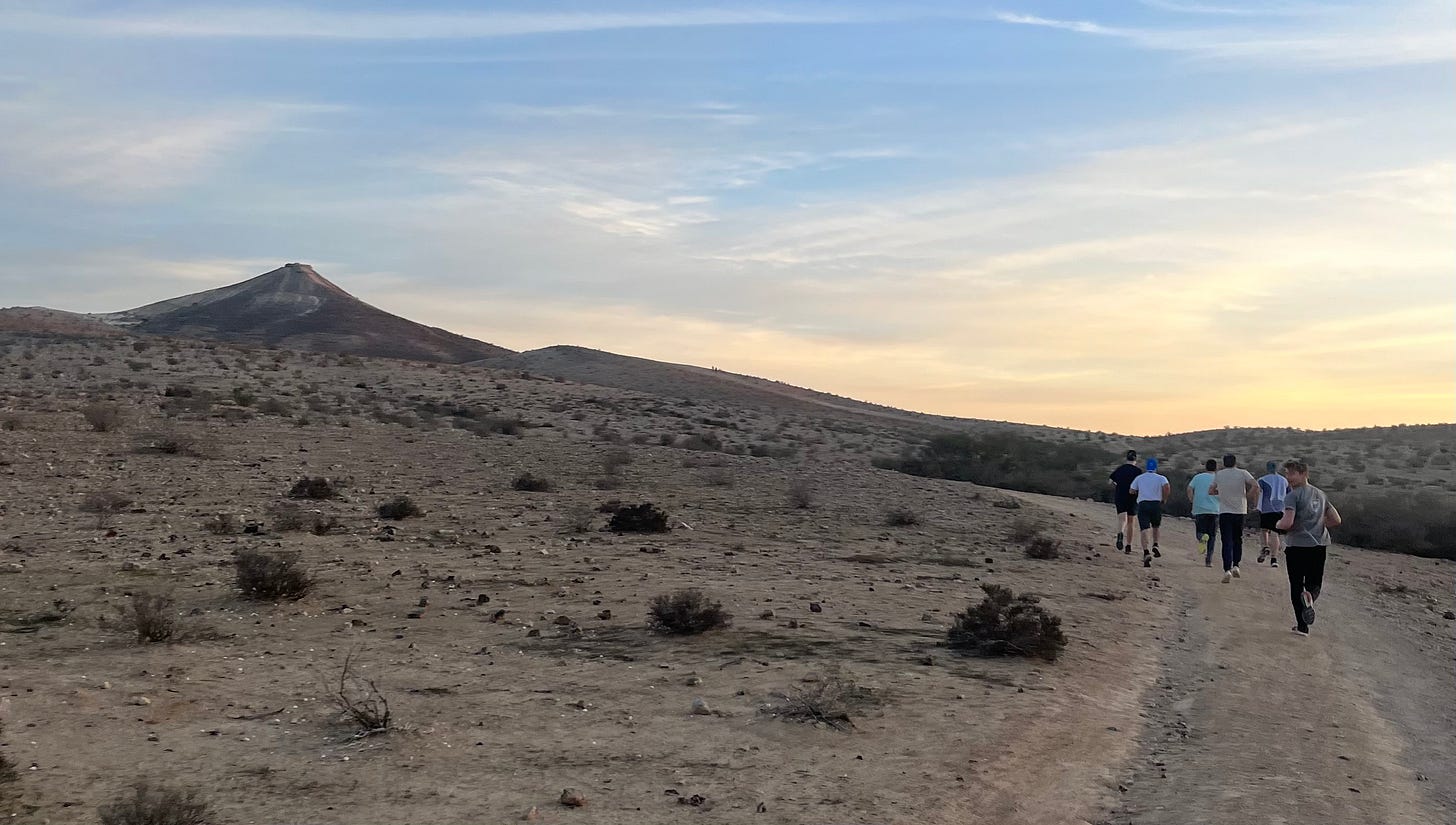Dear Healthy Jew,
These Lev Hatorah guys and I recently stood on this rock in the middle of the Zin stream that might be the southern border of biblical Israel:
Then I stepped out of boundary:
Sorry for the pun. Now let’s get to business (more pictures and videos soon).
Finding and setting personal boundaries can be hard work, but it’s extremely rewarding. Regularly checking in on who I am and where I end enables me to live a happy, productive, and helpful life, as we learned last week.
Determining the borders of biblical Israel can also be hard work, and the search is equally rewarding and fascinating.
The eastern border is relatively simple: The Euphrates to the east (and northeast) of Israel’s Ever Hayarden region, the Jordan for the primary Cana’an region.
The western border, the Mediterranean Sea, is also clear.
But the northern border (where Israel’s primary Cana’an region ends) and the southern borders have been disputed for centuries, some areas for over a millennia. Not by politicians and armies, mind you, but by Judaism’t greatest scholars working to decipher the Torah and Sages’ lists of long-forgotten names of mountains and desert outposts.
The Zin Riverbed - Israel’s Southern Border

I posted recently about the controversy about biblical Israel’s southern border. We learned that Israel certainly doesn’t reach beyond 30°N latitude (which is around 30 miles north of Eilat), and it probably ends far earlier.
One of our generation’s greatest Torah scholars, Rabbi Chaim Kanievsky of Bnei Brak (1928 - 2022), makes a fascinating case for placing Israel’s southern border along the Zin riverbed, a desert wadi that’s often mostly dry.1
The Talmud teaches:
“He founded it on seas, and on rivers He established it” (Psalms 24:2) - these are the 7 seas and 4 rivers that surround the Land of Israel.2
The Talmud continues to list the seas (a term that includes lakes) and rivers, most of which are well known today.
The difficulty is at the south: what river or sea crosses the parched Negev desert?
Another question: the Talmud also teaches that the Jordan River (one of the previous passages bordering rivers) continues from the Dead Sea to the Mediterranean.3 The problem is that it doesn’t.
Unless, concludes Rabbi Kanievsky, the Zin riverbed - which extends west from the Dead Sea - is considered the continuation of the Jordan. If that wadi is the river which borders biblical Israel to the south, we’ve also found the river on biblical Israel’s southern border.4
But Not For Sure
Do these sources close the case for Israel ending at the Zin, which would effectively exclude much of the modern Negev from biblical Israel?
Not exactly, replied Rabbi Kanievsky’s father-in-law, Rabbi Yosef Shalom Elyashiv (1910-2012), one of our generation’s leading authorities in Torah law. Although Rabbi Kanievsky made a brilliant argument, it’s not conclusive enough for legal proof. Until Mashiach (Messiah) will open a new era of clarity and wisdom, wrote Rabbi Elyashiv, we can’t be sure Israel ends before 30°N latitude.
Although some of Israel’s boundaries are uncertain, the quest to find them is not in vain. As with every area of Torah study, the value lies in the process, not the neatly-wrapped conclusion. Every possibility, even if ultimately rejected, is an integral part of our search for God’s will.
Searching for Our Borders
The same goes for our personal boundaries. Sometimes we’ll get them wrong by making a commitment that we can’t live up to, or invading other people’s lives when we think we’re just trying to help.
We don’t need to get our borders perfect - but we need to look for them, to grow in awareness of where we end and the rest of the world begins. We know who we are to whatever degree we know who we aren’t.
On a recent trip with Yeshivas Lev Hatorah to the Negev, we hiked above and along the Zin riverbed. When we stood inside the wadi, at the probable border of biblical Israel, I shared about finding personal borders.
A bit later, after we settled in the desert town of Merchav Ha’am, we ran up the nearby Mount Katom.
Thank you for reading Healthy Jew.
Here are 2 great paths to continue the journey:
Also check out this intro and index to explore hundreds of posts about our 3 Healthy Jew topics: Wellness with Wisdom, Land of Life (Israel), and Sensible Spirituality.
Finally, always feel free to reach out here with any comments, questions, or complaints:
I look forward to hearing from you!
Be well,
Rabbi Shmuel Chaim Naiman
Derech Emunah Hilchos Terumos 1:7, Biur Hahalacha
Bava Basra 74b
Bechoros 55a
Rabbi Kanievsky adds several important points:
Why doesn’t the Torah refer explicitly to this river as the border, instead of its long list of towns (or trailheads?) that can easily be forgotten (as indeed happened)? Because the wadi is usually dry, so in biblical times it was hard to recognize as a well-known frontier.
There are many other wadis that cross the Negev desert. Why the Zin? Because from the few that reach the Dead Sea, only the Zin heads westward from there. The Arava riverbed, for example, drops far south - so far that if it were biblical Israel’s southern border, the Dead Sea wouldn’t really begin the southern border, but would be another landmark to the east.












